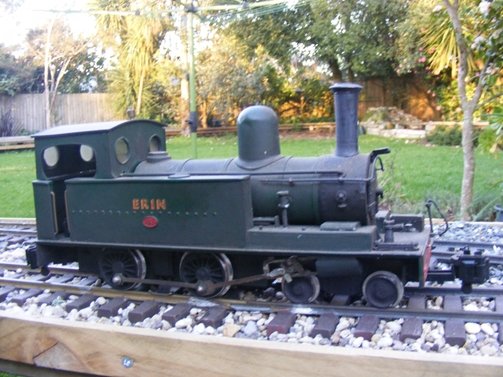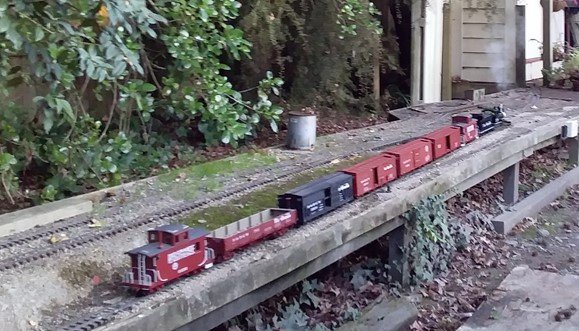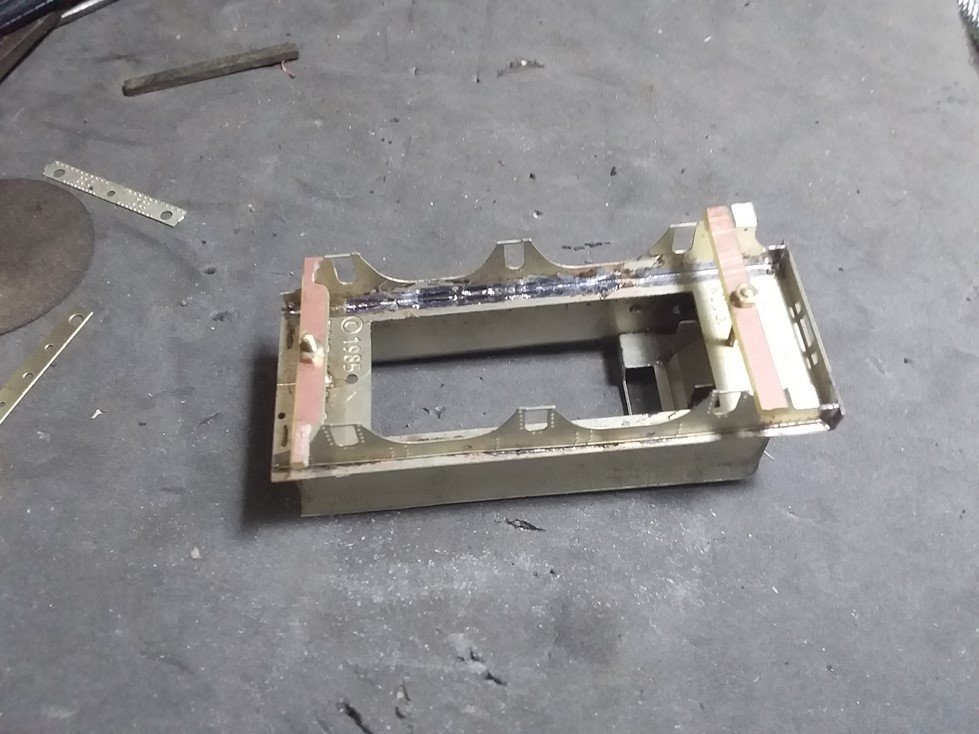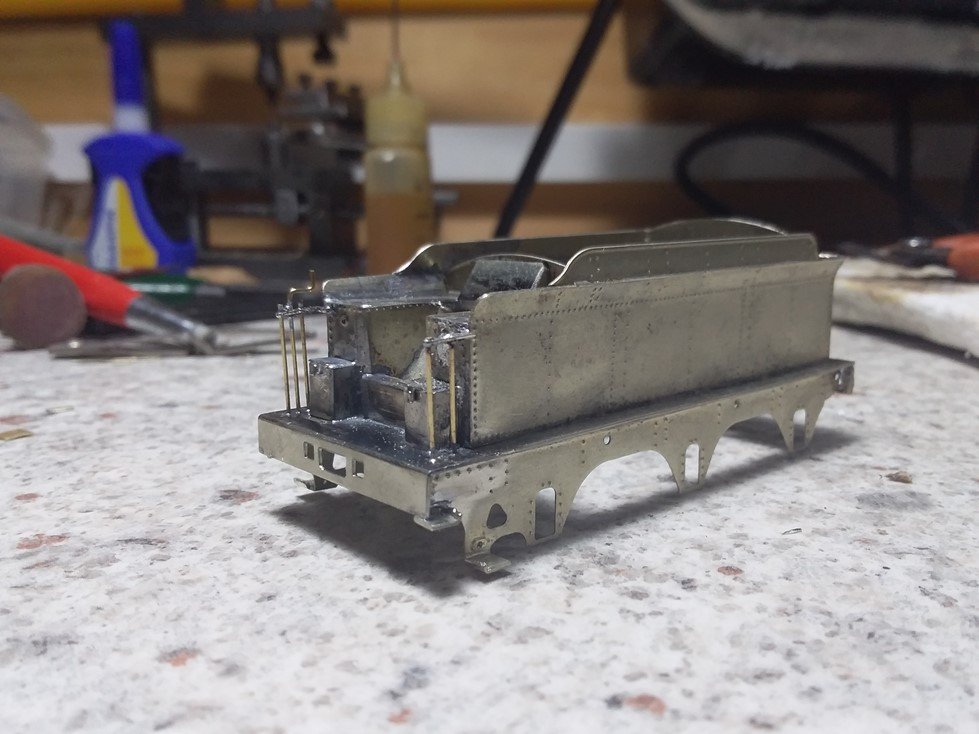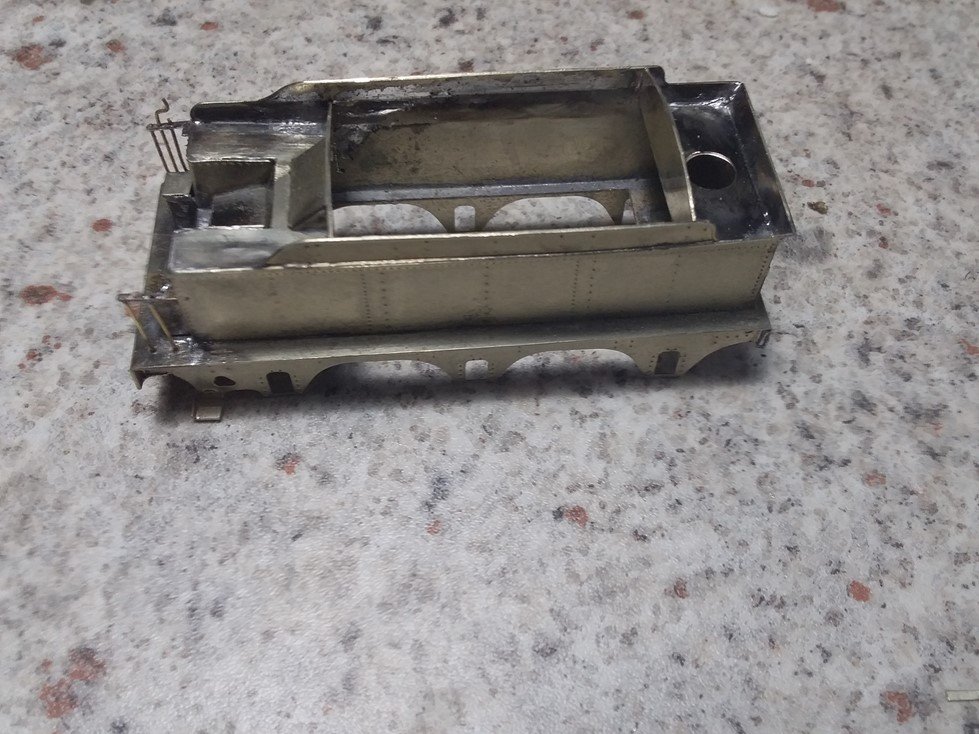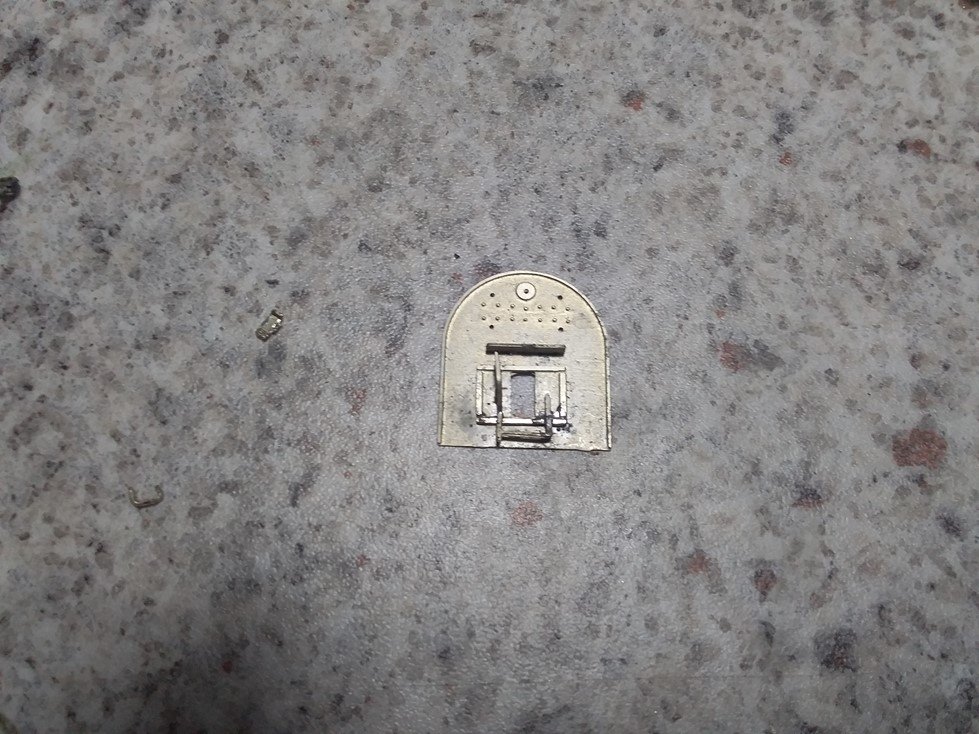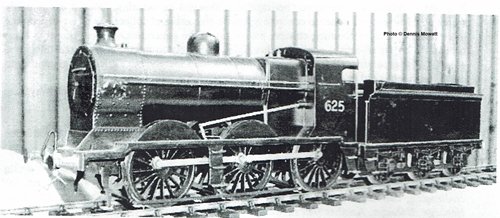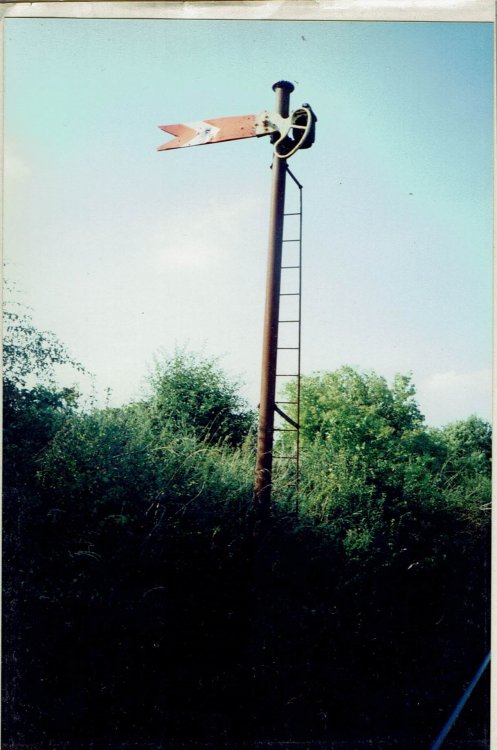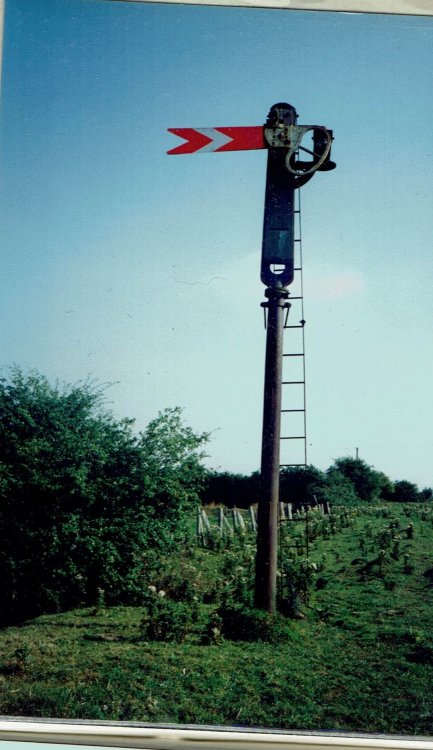-
Posts
4,855 -
Joined
-
Last visited
-
Days Won
119
Content Type
Profiles
Forums
Events
Gallery
Blogs
Store
Community Map
Everything posted by Mayner
-

Narrow Gauge in the Rockies not quite
Mayner replied to Mayner's topic in US / Canadian Railway Modelling
Spent a very enjoyable week in Colorado in 2016 for me the highlights was not quite getting caught in a snow storm at Trout Lake water tower and trestle while tracing the remains of the Rio Grande Southern between Telluride and Lizard Head Pass. Daughter mainly interested in Thomas & Friends set ups at every museums & railroad depot we visited. Holiday worked out mighty expensive when I replace nearly all my LGB & Bachmann stuff with 1:20.3 after seeing the sheer mass of full size American narrow gauge equipment -
I bought S&S No 4 Erin from a modeller in the UK (forgotten his name) who built several Irish Narrow gauge locos in plasticard on rtr chassisand was moving up to standard gauge on 2"½" gauge! Erin is very sturdily built in 1-2mm plasticard with no sign of warping or distortion, only bought parts very old LGB 0-4-0 chassis bogie wheels vacuum pipes and possibly dome!
-
I used to paint CIE coaches black and tan on one side and green on the other to span two eras, gone back to painting both sides the same these days.
-
Studio Scale Models produce a 10mm scale kit of a Tralee & Dingle Kerr Stewart 2-6-0T most likely to run on O Gauge track. The kit was originally designed and produced by Adrian Rowland. Worsley Worksmight blow-up some of their T&D scratchbuilder parts to 10mm if you ask. 15mm Scale (bigger still) is widley used for models of 3' gauge stock on 45mm (gauge 1) track outdoors the rtr stuff is expensive https://www.track-shack.com/acatalog/Accucraft-S20-9G-IOM-Mona-2-4-0T-Lined-Ailsa-Green-live-steam-locomotive-Accucraft-S20-9G.html I have a "near enough" plasticard scratchbuilt model of a Schull & Skibereen 4-4-0T on a Playmobile/LGB 0-4-0 chassis which would have been reasonably inexpensive and satisfying/straightforward to build. There is also an inexpensive IP Engineering http://www.ipengineering.co.uk/page26.html 16mm laser cut ply and card kit of the T&D inspection railcar
-
Colin GSR diagrams (outline only very little detail) of C&M locos were published a recent edition of New Irish Lines. I can scan a copy of the diagrams if its of help. Apparently the authors have been unable to locate a diagram of the original locos as rebuilt into 4-4-0Ts or the C&L 4-4-0Ts
-
There is a 1969 photo of a Cabra-Listowel horsebox special at Newcastle West in Rails Through North Kerry. The train was hauled by B160 and was made up of 15 "Pacos" (horseboxes) with a tin van at each end.
-
Trackwork looks really neat
-
Silver Fox supply OO gauge rtr models of the D & G Class that appear to pass the 2 foot rule i.e. layout locos that look close enough to the prototype from a distance of 2'. The D appears to be a re-painted Bachmann 08 and should have good slow speed running characteristics necessary for a shunter http://silverfoxmodels.co.uk/ir-ie-301-class-d-class-0-6-0-inchicore-works/ The rtr G Class appears to use a Tenshodo Spud motor bogie which is not exactly ideal for a shunter, The 27:1 Black Beetle bogie would be more controllable and have a better speed range than a Spud. The Valve Design (Shapeways) E421 appears to be a reasonably accurate model, the main drawback is achieving an acceptable surface finish with a 3D printed body and sourcing a suitable chassis. I assembled an E421 several years ago using a combination of the Shapeways body, my own detail parts and a custom built Bull Ant chassis. I don't see demand for a rtr E Class stacking up in terms of a rtr model, majority out of service by 1980, limited livery variations. The best option for a rtr E Class would probably to commission DC Kits or Silver Fox to design and manufacture a resin body to fit on a Black Beetle motor bogie with a non powered leading axle or commission Hollywood Foundry to produce a batch of custom built chassis to suit an E Class.
-
It would be interesting to see if there is sufficient level of demand to justify (IRM?) commissioning a rtr E421 or G611 Class. Judging by Murphy Models & IRM releases the highest level of demand appears to be for models of locos and stock which operated during the past 30-40 years, when the D, E & G Class shunting locos were scrapped or out of service. The majority of the diesel shunter's had a relatively short service life and apart from the G Class quite restricted area of operation. The Ds & Es were largely restricted to pilot duty at Connolly & Heuston Station, the North Wall Yards and Heuston-North Wall transfer duties. Most of the D401s appear to have been out or servcie or scrapped by the late 1960s The E401s appear to have been based in Inchacore for use on Heuston carriage & goods yard pilot duties and North Wall Transfer and shunting duties, The E421s appeared to have been used for Connolly coaching pilot duties and shunting and banking at the North Wall, eventually replacing E401s on Heuston pilot duties as the latter locos wore out and main line locos took over North-Wall Heuston transfer freights. The G Class were more widely dispersed but apart from a few sold to the Sugar Company and one (G611?) "borrowed" by CIE to shunt Limerick wagon works out of use by the mid-80s.
-
Depends on where in the world you are and the nationality/first language of the graffiti crew of gang members. Tags often include crew members or gang initials or signatures.https://en.wikipedia.org/wiki/Graffiti#Tagging We had a very interesting meeting with the local Community Constable several years ago during which he produced and interpreted whats best described as a library of local grafitti including the names of specific gangs and deciphered some of the messages. Unfortunately the police abolished the community constables and centralised everything to "improve" their service to the public .
-
You hit the nail on the head minister a lot of graffiti or tagging is tied up with street gangs claiming territory. Tagging a train sends out a pretty strong statement in terms of claiming territory, rival gangs will tag-over each others graffiti. In New Zealand most city councils have a unit that basically records taggers signatures and paints out unauthorised grafitti on public property, police also keep a watch on graffiti as part of monitoring and controlling gang activity. We had a graffiti attack late one night on a construction site in Auckland several years ago, the perpetrators were not exactly under-privileged kids from the wrong side of the tracks but adults in well paid employment. The mupetts put themselves at considerable risk by walking out on a ledge 5 stories up to perform their art. Luckily a neighbour spotted what was going on and took their registration number.
-
They regularly worked Dunlaoire Pier trains, possibly too heavy at 17.8 ton axle load to work south of Dunlaoire. Some of the Midland Cs Class 4-4-0s (axleload 17 tons) 540-44 ended their days in the early 1950s on DSER suburban services. "I last fired on of this class in 1954 on the DSER suburban services. She was being worked to death at this time and , still steaming freely, bucked her way from Bray to Dubin until it was no longer safe to have her on the road. Cuscah would have been horified to see his fine mainline steeds on a glorified tram service" J O'Neill A Decade of Steam RPSI 1973? Another one for the wish list?
-
Hi David Yes I received your message, its likely that I will be going ahead with the design work for the J5 once I complete the artwork for the 52 Class & Midland Standard Goods (kits). I would be reluctant to commit at this stage to produce a weathered variation of the J5, weathering is very subjective its much simpler from a production and quality point of view to produce an ex-works finish.
-
It might be worth while contacting Richard Mclaughlin (irrsdrawings@gmail.com) and the authors of Locomotives of the GSR https://newirishlines.org/contact/ to establish whether they have access to a GSWR 3345 gal (Coey) tender drawing or diagram. Richard has been working through the IRRS archive and may be able to assist, Jeremy Clements & Michael McMahon published a collection of GSR & GSWR loco diagrams through new Irish lines, but have not published diagrams of GSWR tenders. The 3345 gal tender used with 186 appears to have been the GSWR standard type for larger locos and were built between 1899 & 1922. The GSWR & Armstrong Whitworth built larger tenders for 500s & the 400s in 1922, the Armstrong Whithworth built 400s were designed with saturated boilers and would have been heavier on coal and water than the Inchacore built members of the class. The relatively early scrapping of the 500s (potentially the Irish equivalent of a Southern S15 or LMS Black 5) seems odd especially when a number of members of the 400 class remained in service almost to the end of steam. The 500s had a lot of parts in common with 402 apparently the best of the 400s and were true mixed traffic locos capable of heavy passenger and main line goods work.
-

Narrow Gauge in the Rockies not quite
Mayner replied to Mayner's topic in US / Canadian Railway Modelling
Winter arrived on time 1st June (Queens Birthday Weekend NZ) with rain and cold after a long Indian summer, but improved with dry cold sunny days for Matariki or the Máori New Year. I have not had much time to play trains since the last post with most weekends since Easter spent clearing & mulching leaves. The cold weather has the benefit of nice plumes for live steam operation on the downside gas fired locos don't steam as well and use more fuel in cold temperatures even with a water jacketed tender fuel tank. I guess I will have to put hot water in tender tank next time. 278 on the 2% 1:50 grade from Utah Junction to Jackson City. The loco is on the most difficult curved section of the grade between the wye switch and the tunnel Steaming rate improves as demand for steam decreases as alignment improves/grade eases once through the tunnel and trains tend to speed up as they climb towards the crest of the line. The last section of the grade into Jackson City yard is also demanding with 278 almost slowing down to a crawl as it crests the grade, the loco and first caboose have just crested the grade the yard tracks on the left are level. With about 30 minutes light left stage 278 was low on water and gas. I usually use a battery loco to haul in the train, allowing enough time to allow 278 to cool down to be handled for cleaning and servicing before being put away. On this occasion things did not go to plan battery powered K27 461 refused to move forward for no apparent reason half way around the line and I had to call in my trusty Bachmann Connie 2-8-0 to haul the train in after clearing a space on the work bench for 461. At first I though that there may have been a gear box problem, but on closer inspection one of the leading crankpin bolts had worked loose and fouled on the rear of a cross head while running forward, but re-tightened while running in reverse. -
Not a lot of progress of late trying to decide whether to finish detailing the locos or assemble the tender and adjusting to winter arriving in June after a long Indian summer. The tender assembly is relatively straightforward with slot and tab assembly for the main components. I used copperclad sleeper strip to keep the outside framing vertical before soldering in place, I also moved the rear fixing bolt backwards to clear the rear axle and act as a fixing point for the coupler. Tender superstructure, after three locos I think I finally figured out how the tender coal chute assembly is supposed to fit together. Still some cleaning up on the soldered joints, maybe its time to buy a resistance soldering unit! View of the top of the tender, I need to fabricate a tank filler and a (removable?)tank top/coal plate. Backplate with firehole doors added, I will add some basic plumbing and a regulator handle. Test fit backplate, cab splashers narrowed to suit a 21mm gauge model, splasher sides incorporate an representation of the main frames. Body securing bolt to be cut off flush with (wooden) cab floor, excess solder to be removed from inside cab before final detailing, (reversing wheel, backplate detail, handrails, boiler fittings. Next job is to assemble the tender underframe and loco & tender brake gear sub-assemblies.
-
625 32mm gauge one of a batch built by the late Harry Connaghton a Dublin based professional model maker in the late 1970s Harry batch built models of GNR & ex-Midland locos and stock mainly in 7mm some models in OO including a GNR Compound, and JT 2-4-2T tank. The OO gauge JT was priced around £30 when the Britannia pacific the most expensive loco in the Triang Hornby range was priced £5---------£5-s10-0 range. The JM Design J5 will be to a similar or higher standard to Harry Connaughton's models.
-
I am looking at the feasibility of releasing a rtr model of the J5 or 623 Class 0-6-0 in OO Gauge. The locos will be DCC ready, all metal construction with 5 pole can motor with single flywheel with precision gearbox and Markits wheels. Likely cost £600 with 10% deposit at production tooling stage based on a minimum production run of 25 locos balance payable on completion. Introduced as the MGWR F Class in the early 1920s these locos were the final Midland design a powerful mixed traffic 0-6-0 capable of working both goods and passenger trains including the Night Mails and heavy GAA specials and the all important cattle traffic on the Midland network. At least one of these locos worked on the Southern 641 was loaned to Waterford in 1949 to assist in the Beet Campaign. Send me a PM if you are interested.
-
As far as I know CIE & the GNR (I) never used yellow semaphore arms. Distant signal arms were originally red throughout the UK, yellow may have been introduced on the British mainland at some stage after the the 1923 grouping. CIE introduced a day-glo red during the 60s which tended to bleach out to orange. Some relics from the Kingscourt branch
-
Most likely similar labour costs to assemble a powered or un-powered loco plus disruption to the assembly line. Although low by European standards wages labour is likely to be a significant cost with assembly carried out by hand, much simpler and more productive for workers (on bonus or piecework) and management if everyone is assembling the same type of chassis during a shift. Un-powered diesels pretty much became a thing of the past with American diesels when production shifted from the states to japan & China in the 80s & 90s
-
Not sure if I am a Luddite or Kiwi No 8 baling wire mentality I have had an Etch Mate hold & fold tool for many years but rarely use it. I prefer to clamp the workpiece upright in a vice and form the bend with a steel rule or even a strip of hardwood. Sometimes the etched fold line is too-narrow to form a right angle. The fold line should be 1-1.2 times the thickness of the metal in order to etch ½ way through through the metal to form a 90° bend I use aluminium angle or hardwood strips if the workpiece is linger than the vice! Before Steam loco valence clamped in vice, before bending footplate at 90° with a block of wood. After: Valences bent at 90° to running board. Hand vice for holding & folding small parts.https://www.expotools.com/acatalog/Precision-Brass-Band-Vice-79533.html Probably the most useful tool I bought in recent years! Forming a channel Pin chuck for holding & forming very small parts. https://www.expotools.com/acatalog/Fine-Steel-Hand-Vice-79530.html
-
The water tanks swap-bodies were converted from CIE owned tank wagons built in the late 50s/early 60s, the wagons are standard 20' skeletal container wagons introduced in 1970. The tank wagons had a bullied triangulated underframe (similar to corrugated open wagons & H vans built during the 1950s/60s). CIE converted the tank wagons to swap-bodies by removing the running gear and extending the underframe to 20' and fitting container cup locks. Photos and information on the tank wagons in their original form is scarse, some were built for stores oil and industrial alcohol traffic from the Chemi Teo plants in Cooley & Donegal Irish Railways Today (1967) H Richards & B Pender has details of the numbers but no photos of the tank wagons in their original condition. The 4w vans are conversions of Bulleif 4wTPO.
- 97 replies
-
- 2
-

-

-
- weedspray
- 42 ft flat
-
(and 2 more)
Tagged with:
-
Most likely unloading/sorting rails (from the closed GNR lines in Cavan & Monaghan) for re-use or scrapping rather than in connection with a re-laying operation than in connection with a re-laying operation. The rails in the foreground appear to be stacked for re-use and there appears to be a large pile of scrap rail in the background. The Bretland p.w. depot & gantry was mainly used for scrapping locos and stock in CIE days, at one stage a new overhead crane was installed on the existing crane rails
-
A Model Railways article on Roy Jackson's High Dyke layout inspired me of the level of realism and standard of running that could be achieved using EM standards, I later saw Dunwich and Blakeney on the UK exhibition circuit which probably lead to a not so brief flirtation in with building/assembling several large BR steam locos from kits in OO & EM. Retford, High Dyke and Stoke Summit really captured the atmosphere of the East Coast Main Line and the East Midlands
-
I have a Herbert Richards photo of a very decrepit looking MGWR 20t van stored/dumped at Liffey Junction possibly from the early 60s. The MGWR vans with raised cupolas and drovers compartments seem to have been withdrawn in GSR days. Leaf fall is just about finished though track and rolling stock maintenance on the garden railway will keep me busy getting ready for the next operating session/running day in about 3 weeks time
.png.c363cdf5c3fb7955cd92a55eb6dbbae0.png)


